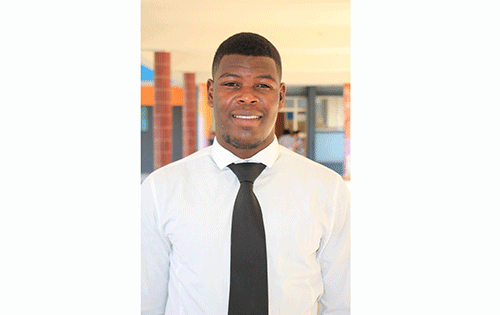Malcolm Kambanzera
Belinda Mthombeni
Learners spend six hours a day in a classroom, Monday to Friday for 13 years (over 15 000 hours) on average. For those who continue to university, they continue to add onto that cumulative total. In the age of Google, we receive so much information on a daily basis. We are able to search and find basically anything the human mind can think possible. So much has changed in our world, but has the basic structure for education? The answer is no.
From the First Industrial Revolution in the mid-1800s, education took primarily a skilled based approach. The mass growth of industries from textile to energy-based saw the need for more competent workers to work in the factories and manufacturing plants. It brought about the need to have schools to train people on how to work with the newly-invented machinery. Many schools were established all around. Apart from teaching the basic elementary skills of how to read and write, higher institutions of learning were also established. They mostly dealt with specialised fields and led to the rise of highly qualified experts who would continue inventing new technologies which we use now.
However, society has changed significantly since the 1800s; it is no longer just about having a specialised or technical graduate. There is an ever growing need to produce more all-round graduates who are ‘ready for the work of the future’. Graduates who are equipped with skills that they will need in 10-15 years. Therefore, schools and universities should move towards a form of learning that encourages group learning and sharing of expertise across fields of study.
Nowadays, the truth and right or wrong answers are not only held in the mind of the educator, who has to stand at the front of the classroom and lecture to disperse his knowledge. But our classrooms still resemble those from the early 1900s that were filled with desks, chairs and blackboards. It appears only the blackboard has been replaced by the whiteboard. Most, if not all of our schools and universities were built as master planning projects to maximise occupancy rates and not as an integral part of teaching and learning.
What if we revolutionised education and designed spaces that do not look like a classroom at all? That has funky furniture and all whiteboard walls and encourages active learning. Reconfigure chairs and desks to work in groups. Positively impact learning and change the pedagogical approach (the way we teach). Allowing learners and students to evaluate point of views, form new ideas, analyse and apply. These will be higher order learning objectives and students will be able to share and connect with one another and have a collective intelligence.
The ultimate goal is for learners and students to use that group learning experience and share their knowledge with others across different fields of learning and vice-versa. Have a series of environments that stretch our bodies, expand and stimulate our minds and create opportunities to interact with others.
That environment is called ‘MakerSpaces’. What are MakerSpaces? Makerspaces are a wonderful example of STAEM (Science, Technology, Arts, Engineering and Mathematics) activities for schools. Typically, makerspaces are environments that encourage students to explore, design, experiment and build.
Where they are able to take items apart, put things together, and dream of imaginative creations. The notion of multiple attempts, refining designs and failure are all inherent with engaging students to take risks. While guidance from teachers helps set-up the task for students, students’ actions are mostly self-directed as they apply their knowledge to creatively solve problems.
Makerspaces typically are a defined, open space area with tools and materials. The items in the area can vary ranging from household items (toilet paper rolls, tape) to high-tech equipment (3D printers, electronics).
In addition to the natural enjoyment of makerspaces, there are a number of desired advantages and results that come with makerspaces.
Innovation and Creativity: This innovation and creativity encourages students to try different things in a typical educational environment. These skills are vital in our ever-changing world.
Experimentation and Revision: Students will need to analyse what is working, how to fix any problems, and how to cope with missing materials. This type of self-analysis enhances students’ ability to look at their work and find areas of improvement.
Collaboration: Many makerspace activities are designed for collaborative groups. Students can work together, design a plan, assign a job, and figure out norms for their groups to be successful.
Resiliency and Self-worth: Things will need to be adapted causing the realization that multiple attempts are needed for success. This develops resiliency in students as they recognize that things won’t always work the first time around and that effort equates to success.
All in all, it takes a great sacrifice to take a ‘Chinese leap’ forward. We need to rapidly adopt to changing times and ways of doing things. Therefore, as we move forward, augmented and virtual realities will enter into the way we teach and learn. Perhaps classrooms might not even be defined by four walls anymore. But until we get there, let us bring innovation into the classroom so that we can educate our students in spaces that keep pace with new technologies and revolutions.


